Bulls Blood: the Battle is on! Eger VS Szekszárd
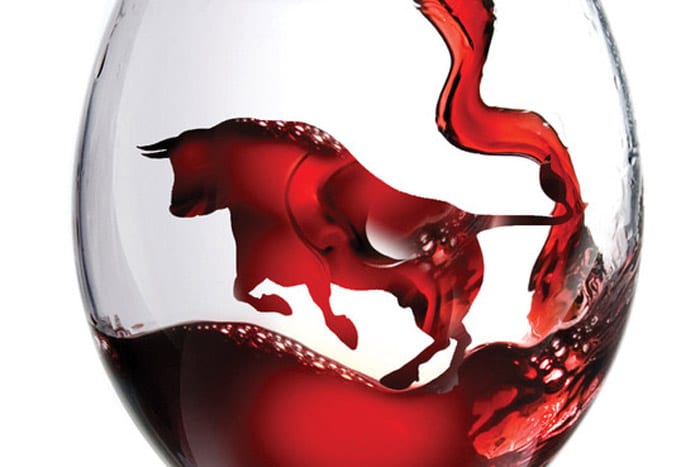
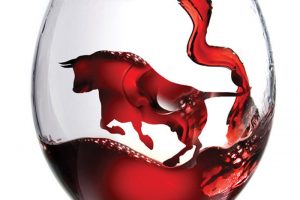
Hungarian Bulls Blood
Bulls Blood (AKA Bikavér / pronounced: bik-ah-vair) name dates back to centuries. It originated from the siege of Eger Castle in 1552, during the Ottoman Wars in Europe. The legend holds; two thousand men, women and children defended the castle and triumpher over 30-40,000 Turks.
Eventually, the vanquished declared, that the victors must have been drinking Bulls Blood to have been so strong to defeat them.
Bulls Blood: from two regions

Hungarian wine regions
Bulls Blood has come a long way since, and the brand has seen many changes in tradition recipes, regional- and winemakers own preferences, but continues to represent a legendary symbol of red wine making in Hungary.
In the last twenty years or so, laws and regulations evolved a lot, quality is now strictly classified and controlled, that resulted in a reliable and prestigious modern cuvee, as it is currently known.
Bulls Blood can only officially be produced in two wine regions of Hungary: Eger and Szekszárd. The characteristics still cannot be clearly distinguished in the two regions’ Bulls Bloods. However the blends, the requirements, and grades differ in both, in order to adapt to the local soil & particular climate of the two regions. And this is where the battle of the two Bulls Bloods gets interesting.
Whilst it genuinely is an intriguing exercise to try, taste and compare the different characteristics of the two regions’ Bulls Bloods side by side. Many argue that this competition is also great from the quality perspective, driving both side towards making better and better wines overall.
Bulls Blood from Szekszárd
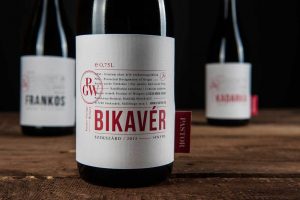
Bulls Blood
Szekszárd Bulls Blood is classified in two grades. The standard must contain at least three grape varieties in the blend, with Kékfrankos and Kadarka representing minimum of 40% (Kékfrankos dominating). Other varieties (such as Blauburger, Meniore, Syrah, Zweigelt, Sagrantino et al) must not be over 10% in the blend.
It also has to be aged for a minimum of one year oak. The dominance of Kékfrankos highlights the Szekszárd character of the Bulls Blood. There is no other similar blend anywhere in the world based on Kékfrankos and Kadarka. Kékfrankos contributes with acid and structure, providing the ‘spine’ of the wine. Kadarka adds its unique aromas.
With the Premium rated Szekszárd Bulls Blood the rules are further sophisticated with an additional year of bottle ageing (on top of the one year barrique ageing). Furthermore Kékfrankos to be present at a minimum of 35%, Kadarka at 5%, Syrah at 10%. It is possible to add further varieties from a set number of grapes (Cabernet Sauvignon, Merlot, Pinot Noir and Cabernet Franc).
It is often argued, the Premium is more “international” in style based on the varieties used and proportions weighted.
Bulls Blood from Eger
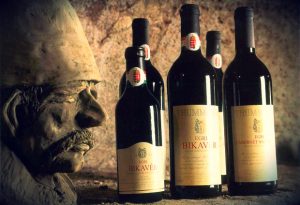
Bikaver Bulls Blood
Eger Bulls Blood has three classifications: Classicus, Superior, and Grand Superior.
Classicus is a blend based on Kékfrankos dominating with at least two of the following 13 varieties: Bíbor kadarka, Blauburger, Cabernet franc, Cabernet sauvignon, Kadarka, Kékfrankos, Kékoportó, Menoire, Merlot, Pinot noir, Syrah, Turán, Zweigelt. None of these additional ones can be more than 50% though.
For the Classicus , a minimum of 6 months is required in oak. For the Superior it is one year. The Grand Superior must be aged for 16 months in oak with an additional 6 months bottle ageing.
Additionally, at least 5 of the above 13 varieties must be represented in the Superior Kékfrankos based blend. The main differences manifest in the body and fullness of the wine, as well as in the length of the finish.
Bulls Blood: Szekszárd VS Eger
Kékfrankos (forming the base of the blend) and Kadarka (second strongest presence in bulls blood in general) are not only the most planted varieties in Hungary. Hungary also encompasses overall 50% of the world’s plantings of these two varieties.
Both Kékfrankos and Kadarka are regarded as great blending partners and versatile local varieties in Hungary. Hence they serve as a fantastic tool to determine the style of the wine in the Szekszárd region VS Eger region battle.
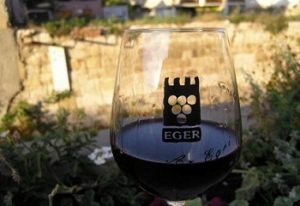
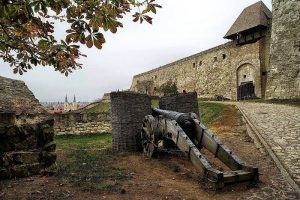
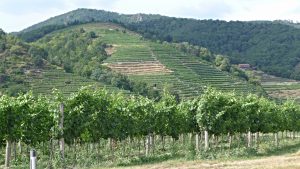

Generally, Eger Bulls Blood tends to represent a more tannic, earthy favours, and sit on the firmer, more structured end of the spectrum. Szekszárd’s Bulls Blood tend to show elegance, luscious fruit ripeness, softer texture and spicy character, that also ages faster.
As with all wines of course, it mostly comes down to personal taste and preference. The Bulls Blood legacy however, continues to offer an intriguing opportunity for wine enthusiasts to examine and compare the different characters of different regions!
An excellent quality Bulls Blood is mostly recommended to enjoy with beef, game, or classic spicy Hungarian dishes, and with a serving temperature of 15 – 17 °C.
